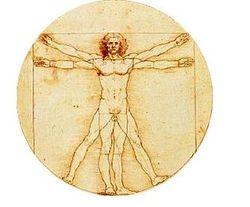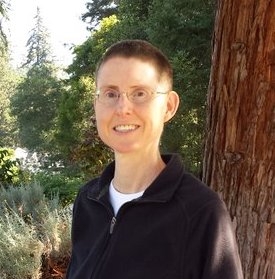
The Buddha offered three broad domains of practice: Body, speech, and mind. Of course these are not entirely separate, but it is useful to distinguish them in order to talk about specific practices. Ultimately we are training the mind, but body and speech are excellent tools for doing so, in addition to working on the mind explicitly. (For a deeper exploration of this topic, here is a talk I gave at IMC).
From Hafiz:
What is the key
To untie the knot of the mind’s suffering?
Benevolent thought, sound
And movement.
In each domain, we can imagine two modes of practice: Intentional actions that help us train the mind, and observation of how experience unfolds in order to learn and have insight. Both modes are valuable and necessary.
Using the Body
In the case of the body, the first mode of practice involves undertaking deliberate actions with the body. What we do with our body is consequential – how we hold it, how we use it, how we take care of it. The body is the key vehicle in ethical conduct: Not killing, stealing, or committing sexual misconduct.
The body is also used to take the meditation posture. The sitting posture itself is designed to be a stable, relaxed posture, which helps the mind to calm down and relax too. If it's difficult for you to establish the practice of sitting every day, it helps to just take the posture daily for any amount of time, even 1 minute. As Munindra-ji said, "Just put your body there." (again and again).
This area of “using the body” includes both restraint and positive actions: Stopping yourself from having the third piece of cake, and also deliberately offering that person at work (whom you dislike) the use of your stapler when you see them looking for one. You will notice that you need to use your mind to do this – it’s an example of the body-mind link: Training your body has an effect on your mind. Positive actions like volunteering or otherwise being generous also assist in mental development.
Another example is sitting with pain, as all of us do at some point (even the Buddha). One option is to “breathe through” the pain – taking deliberate action with the breath to help ease the mind’s tendency to fixate on the pain and make it worse.
Observing the Body
The second mode of practice is to observe the body. Many body awareness practices are recommended in the suttas: breath, postures, activities, elements, body parts. Some are external and some are internal. One function of these is to develop mindfulness. It is to make sure that we can have a continuity of mindfulness in all activities, which is very important for insight.
But another function of observing is to learn about the body, and also the mind. We actually carry a lot of false ideas and assumptions about both body and mind that have never been checked, and only very careful, unbiased observation is going to expose their falseness.
Joseph Goldstein said: “See what you do.” This means just letting the body act while observing carefully. We don’t always want to control our body so tightly – we can start to get caught up in how we look, or how we think we “should” be, missing what is actually there. We may have taken on a spiritual identity about how good Buddhists look and act, and be subtly controlling our experience to match this.
Try just acting, and observe what is going on. It takes some practice to find this balance - being able to act naturally while also be keenly aware.
When we combine the quiet sitting posture with the internal observation of the body – letting it express itself as it is – things get very powerful. Recall the idea of working with pain by “breathing through” the pain. If we combine that action with observing the result of this, we’ll notice that the pain no longer feels so solid. What used to be a solid wall of “pain” (an abstract concept) is seen to be a series of flashes, often in a very small region. Maybe heat, stabbing, tingling, burning, aching, all coming and going very fast. Once you see this, the mind stops believing the pain in quite the same way – the relationship changes, and there will tend to be less suffering. (But you have to see it directly – reading it right now is not enough).
This kind of open observation of the body is great in general. We may experience energy, tightness, openness, areas of heaviness or lightness, a sense of no boundaries, even different shapes or sizes of the body.
These are not necessarily significant in and of themselves, although they seem dramatic at the beginning. After a while, they get more commonplace. What is important is that the mind’s perception of the body is becoming more variable. You are getting less subject to fixed, habitual ways of seeing and feeling your body.
Observing the body carefully enough leads naturally to seeing into the mind, and then things really get interesting. But don't think of the body as "beginner's stuff" that you'll move past at some point. The body is an incredibly important realm of practice that will serve along the whole path.
From Hafiz:
What is the key
To untie the knot of the mind’s suffering?
Benevolent thought, sound
And movement.
In each domain, we can imagine two modes of practice: Intentional actions that help us train the mind, and observation of how experience unfolds in order to learn and have insight. Both modes are valuable and necessary.
Using the Body
In the case of the body, the first mode of practice involves undertaking deliberate actions with the body. What we do with our body is consequential – how we hold it, how we use it, how we take care of it. The body is the key vehicle in ethical conduct: Not killing, stealing, or committing sexual misconduct.
The body is also used to take the meditation posture. The sitting posture itself is designed to be a stable, relaxed posture, which helps the mind to calm down and relax too. If it's difficult for you to establish the practice of sitting every day, it helps to just take the posture daily for any amount of time, even 1 minute. As Munindra-ji said, "Just put your body there." (again and again).
This area of “using the body” includes both restraint and positive actions: Stopping yourself from having the third piece of cake, and also deliberately offering that person at work (whom you dislike) the use of your stapler when you see them looking for one. You will notice that you need to use your mind to do this – it’s an example of the body-mind link: Training your body has an effect on your mind. Positive actions like volunteering or otherwise being generous also assist in mental development.
Another example is sitting with pain, as all of us do at some point (even the Buddha). One option is to “breathe through” the pain – taking deliberate action with the breath to help ease the mind’s tendency to fixate on the pain and make it worse.
Observing the Body
The second mode of practice is to observe the body. Many body awareness practices are recommended in the suttas: breath, postures, activities, elements, body parts. Some are external and some are internal. One function of these is to develop mindfulness. It is to make sure that we can have a continuity of mindfulness in all activities, which is very important for insight.
But another function of observing is to learn about the body, and also the mind. We actually carry a lot of false ideas and assumptions about both body and mind that have never been checked, and only very careful, unbiased observation is going to expose their falseness.
Joseph Goldstein said: “See what you do.” This means just letting the body act while observing carefully. We don’t always want to control our body so tightly – we can start to get caught up in how we look, or how we think we “should” be, missing what is actually there. We may have taken on a spiritual identity about how good Buddhists look and act, and be subtly controlling our experience to match this.
Try just acting, and observe what is going on. It takes some practice to find this balance - being able to act naturally while also be keenly aware.
When we combine the quiet sitting posture with the internal observation of the body – letting it express itself as it is – things get very powerful. Recall the idea of working with pain by “breathing through” the pain. If we combine that action with observing the result of this, we’ll notice that the pain no longer feels so solid. What used to be a solid wall of “pain” (an abstract concept) is seen to be a series of flashes, often in a very small region. Maybe heat, stabbing, tingling, burning, aching, all coming and going very fast. Once you see this, the mind stops believing the pain in quite the same way – the relationship changes, and there will tend to be less suffering. (But you have to see it directly – reading it right now is not enough).
This kind of open observation of the body is great in general. We may experience energy, tightness, openness, areas of heaviness or lightness, a sense of no boundaries, even different shapes or sizes of the body.
These are not necessarily significant in and of themselves, although they seem dramatic at the beginning. After a while, they get more commonplace. What is important is that the mind’s perception of the body is becoming more variable. You are getting less subject to fixed, habitual ways of seeing and feeling your body.
Observing the body carefully enough leads naturally to seeing into the mind, and then things really get interesting. But don't think of the body as "beginner's stuff" that you'll move past at some point. The body is an incredibly important realm of practice that will serve along the whole path.

 RSS Feed
RSS Feed